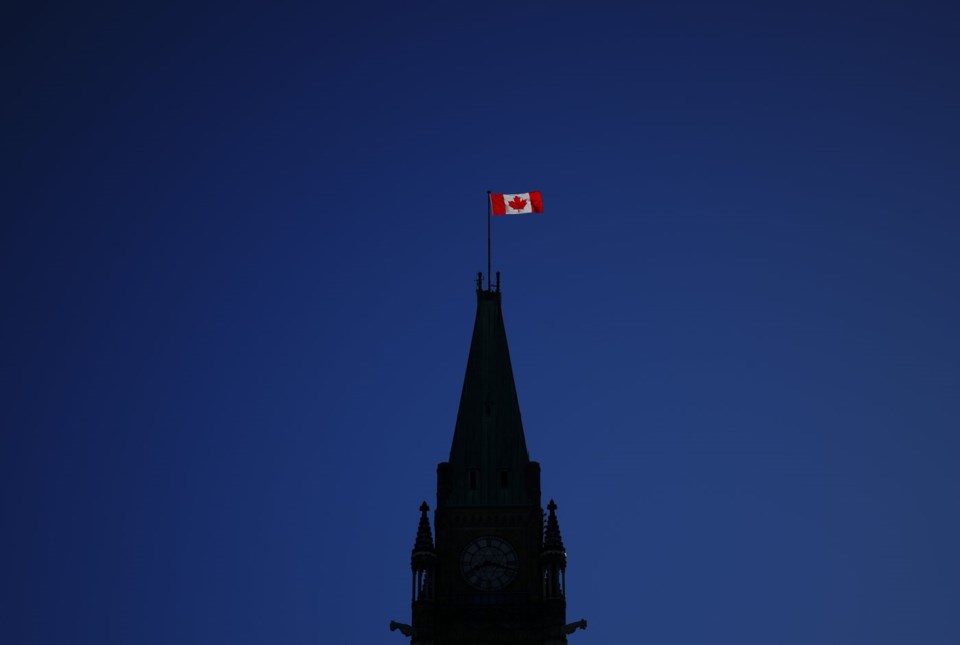FREDERICTON — Canada's unofficial national colours will be on full display Monday as Canadians don patriotic T-shirts, wave hand-held flags and hang bunting to celebrate their country. But while the red-and-white flag for the most part unites Canadians, the colours' meaning is open to interpretation.
Xavier Gélinas, a curator at the Canadian Museum of History, said there is no authoritative source that explains why the country drapes itself in red and white.
"It has never been stated clearly, explicitly anywhere, that red and white are Canada's official colours," he said in a recent interview.
There are several schools of thought about the origins of the country's colours, he said. Some believe they were gifted to Canada by King George V in 1921.
For about a century, Gélinas said, some believed the red represented the country's Britishness — as the colour figures prominently in the flag of the United Kingdom — and also energy, life, blood, vigour and the splendour of Canadian autumns. White, he said, was thought to reflect Canada's hardy, snowy winters.
But what is more likely, he added, is that the red and white "evolved more organically," with red associated with England and white with France, which also has red and blue in its flag.
The choice of the maple leaf, he said, is far less ambiguous as the tree from which it grows is native to the eastern two-thirds of the country. "A maple leaf represents Canadianness in the way that the rose represents Britain, or the thistle represents Scotland, or the clover represents Ireland."
The Maple Leaf was raised on Parliament Hill in February 1965, following a proclamation from Queen Elizabeth in January of that year.
Red and white are an interesting combination for several other reasons, said Henry Navarro, associate professor at Toronto Metropolitan University's school of fashion. The white background allows the eye to fully experience the richness and stimulating vitality of the red, he said.
Scientifically speaking, he added, white is the combination of all the colours in the spectrum of light.
"White is not the absence of colour at all, but the presence or reflection of all the colours .... If we extrapolate that in terms of the concept of multiculturalism … that's the founding idea of the Canadian state."
Robert Ott, professor of fashion at Toronto Metropolitan University's Creative School, said red and white are considered a "happy colour combination" and are used in ready-to-wear fashion. But wearing them together, he said, is “considered campy.”
Ott said red is one of the most commonly used colours in sports teams. The combination of red and white has served Canadian athletes well on the international stage, he said. And while a number of countries have red and white in their flags, which can make it challenging to give Canadian athletes a distinct identity, Ott said the official designs for the national team have stood out.
"There is a distinct Canadian identity, either through symbolism, through the maple leaf, or the colours themselves."
Red, he added, is used more often than white in athlete uniforms because of practical reasons: white clothes show dirt far more easily than red ones do.
Navarro said red and white have varied meanings in different cultures. In the West, he said, red is associated with passion, blood, and energy, while for many Indigenous cultures of the Americas, the colour symbolizes war, Mother Earth, and suffering.
"Red is prominently used as a war paint or within ceremonial practices associated with conflicts and healing," he said.
In many Eastern cultures, red is a colour associated with celebration and luck, and usually worn by brides.
In the contemporary Eurocentric cultural tradition, he said, white represents purity and peace. But in some Asian cultures, white has been historically associated with death and mourning, he added.
The red and white of the Canadian flag are not unique, with a number of countries including Japan, Denmark, Indonesia and Switzerland displaying those colours, yet they are often associated with Canada, Navarro said.
"These are very generic colours. Yet, that's the power of Canada’s influence, of soft influence, around the world."
Gélinas said the Maple Leaf is a symbol of pride for Canadians.
"It's more of an allegiance to a principle, to the principle of Canada, and especially to the principle of a country, present, past and future, that may be defined in various ways — a multi-ethnic and multicultural country with room for many communities to coexist and to grow."
This report by The Canadian Press was first published June 28, 2024.
Hina Alam, The Canadian Press



